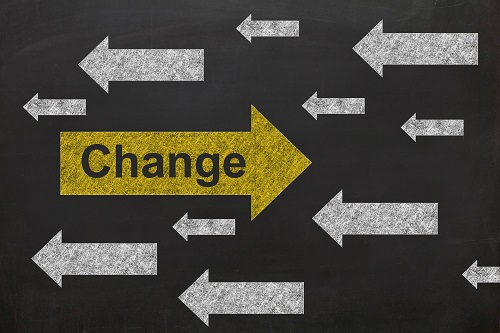What We're Reading Now
What Does it Take to Make Yourself Change?
16 July 2019
Barbara watched Mel Robbins' TEDx San FranciscoTalk on How to stop screwing yourself over and learned why it's so hard to change.
Tags: barbara read, barbara watched, change, ted
I listened to Mel Robbins' TEDx San Francisco Talk twice. The words she said that struck me like a lightning bolt of truth were, “In any area of your life that you want to change, there is one fact you need to know. You are never going to feel like it.”
Here’s why. She referred to two sides of the brain, but she named them something new—one is autopilot and the other is the emergency break. The autopilot helps us organize our lives and get into routines. The emergency break says stop when we want to try something new because it might be dangerous.
With great energy and enthusiasm, she blurts out ideas that made me say to myself, "Right!" I found myself cheering when she said, “No one tells you that at 18 it is your job to parent yourself—make yourself do what you don’t want to do. Anything that is a break from your routine is going to require force….Scientists call it activation energy.”
If you want to experience how much force it takes to change, set your alarm clock for 30 minutes earlier than you usually get up. When it goes off, count 5- 4- 3- 2- 1 quickly and stand up. No rolling over to feel the cool of the sheets one last time, no snuggling up to stay in the warmth. Throw back the covers and stand on your feet. When you do this, it will be an unpleasant jolt to your body. That is the level of discomfort needed to begin a change.

Robbins explains that we have ideas all day long that could improve our lives, but we don’t act on them. You have five seconds to do something physical to move you towards your idea or your brain will pull the emergency break, and you will stay exactly where you are or stay in the same frame of mind when you are sad or angry.
Inertia is a powerful phenomenon, but the physical act needed in five seconds to get you going doesn’t have to be huge. “You can send yourself a text, write a note.”
I realized I sometimes even feel resistance about activities I like to do as a hobby—sewing and painting. I’ve learned if I turn on the sewing machine or if I get the paints out, I will begin.
At work, you can open PowerPoint or jot down agenda items for a meeting in any order. Writing is a physical way to act. Write about a plan of what you might do, whine on paper about why you don’t want to do it, but then write one thing you could do if maybe you decided to act on it—the absolute easiest thing is just fine. I always start by writing.
If you’re at home and have the thought that you wish you would exercise, move toward your work out shoes, put them on—if not the shoes then just the socks that go with them. Even standing up will get you closer to doing what you want.
Whatever you want or need to do, count 5- 4- 3- 2- 1 and begin. Robbins is firm about the fact that you will never feel like doing it before you begin. You may feel like keeping on doing it, you may not, but if you have begun, you will most likely finish all of it, part of it, or enough of it.
Will you try her 5 Second Rule?







Comments
Our Comment Policy:
Our blog posts are only half of the conversation. What our readers have to say is equally important to us, and we're grateful for all the comments that continue the dialog.
To ensure that the discussion here is as useful as possible to all of our readers, please be respectful of our contributors and refrain from harassing, threatening and/or vulgar language. We reserve the right to screen and remove any comments from the site. If you have a question about a comment or want to discuss our policy, please contact us. We'll talk it over.
There are no comments for this entry yet.